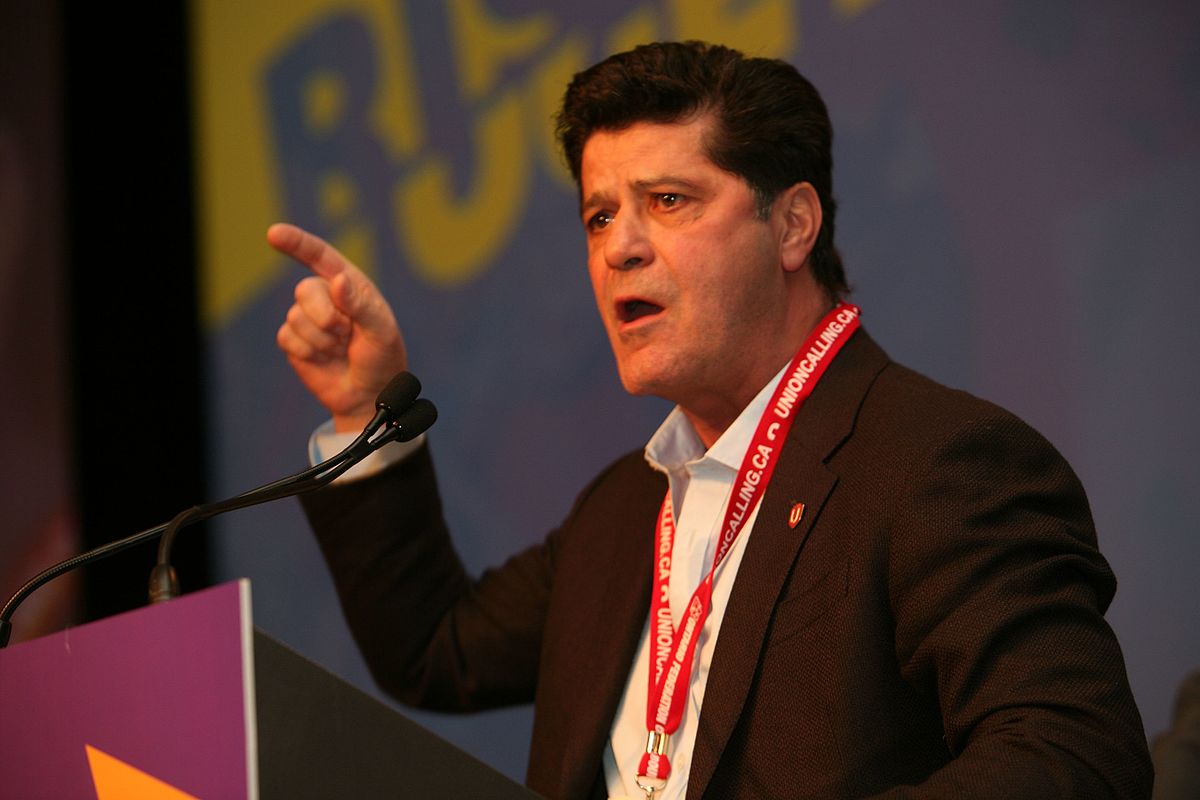

Share
Prodded by the president of Unifor, Canada’s largest private sector union, the Canadian government is formally demanding that a “new NAFTA” force the United States to eliminate so-called “right-to-work” anti-union laws.
Not only that, adds Unifor President Jerry Dias, but his government wants the negotiations on a revised North American Free Trade Agreement between the U.S., Canada and Mexico to require the three countries to sign and follow all eight International Labor Organization conventions specifying workers’ rights worldwide.
Canada has signed eight, Mexico has signed seven, and the U.S. has signed two, he said. The convention on the rights of woman workers is not one of them, Dias noted.
Dias outlined Unifor’s position on the “new NAFTA” talks and top Canadian officials’ agreement with it, in a Sept. 12 telephone interview. He raised right to work and other worker rights issues in late August at the second round of “new NAFTA” talks in Mexico City.
Both Canadian Foreign Minister Chrystia Freeland and chief trade negotiator Steve Verheul, agree with the union’s stand, he said. They’ve “formally put that position in the talks” on a new NAFTA.
During the 2016 U.S. campaign, GOP presidential nominee Donald Trump labeled NAFTA “the worst trade pact ever signed” and vowed to dump it. That promise helped him gain a 50-50 split among union members and their families in key Great Lakes industrial states. By narrowly carrying Ohio, Pennsylvania, Michigan, and Wisconsin, Trump wound up in the White House.
But once there, he decided to renegotiate, not dump, NAFTA, with what he claims is the objective to help U.S. workers. U.S. unions say Trump has adopted only a few pro-worker NAFTA negotiating goals, out of a 47-page detailed list they presented during pre-talks hearings.
Trump also said he’ll walk away from the NAFTA talks if the U.S. doesn’t get what it wants. “That’s OK,” Dias commented.
But if Trump doesn’t walk, “This is a once-in-a-lifetime opportunity to fix the worst deal, for Canadian and U.S. workers, that has ever been signed,” said Dias, who got his union start with the Canadian Auto Workers. “I don’t know why they signed a deal that cost half a million manufacturing jobs in Canada and even more in the U.S.”
Economic Policy Institute calculations put U.S. factory job losses to Mexico due to NAFTA at between 770,000 and 1 million since the so-called “free trade” pact took effect 23 years ago. Thousands more have been lost in other industries, such as call centers.
And Canada and the U.S. are still shedding jobs to south of the border, Dias added, due to the combination of low Mexican wages and company-sponsored and company-controlled unions there.
In one example, “We’re bargaining for the workers right now at the GM Cami plant” in Ingersoll, Ontario “which is the most productive plant in the world. Yet they’ve laid off 600 workers because GM is moving production of the Terrain (an SUV) to Mexico, where they’re paying people $2 an hour.” The provisions of the current NAFTA, Dias said, meant “Canadian workers got screwed and American workers got screwed.”
In another case, BMW is building a plant in Mexico to manufacture $60,000 vehicles. The factory will open in 2019, but the firm has already signed a contract with what Dias calls “a yellow union” [dominated or influenced by an employer, not an independent trade union] to pay the workers $1.10 hourly. The Mexican minimum wage is 65 cents hourly and Mexican President Enrique Peña Nieto “wants to keep people in poverty,” Dias said. Mexico’s official poverty rate is 51 percent, virtually identical to its rate when NAFTA was signed.
Dias made clear in talks with Freeland, Verheul, and their labor negotiating team, and repeated in the interview, that Canada should walk away if it doesn’t get changes in labor laws in both Mexico and the U.S. The U.S. changes would include scrapping the right-to-work section of the 1947 Taft-Hartley Act.
“This is 70 years later!” he exclaims. “The U.S. has to get out the Stone Age in its labor laws. We’ve got a race to the bottom,” which cuts U.S. workers’ wages, makes their jobs less safe, denies them the right to organize and more. Statistics show the U.S. private sector is 6.4 percent unionized, one-fifth of Canada’s union density of 31.8 percent.
Because of weak U.S. labor laws, Canada finds itself at the new NAFTA bargaining table battling both the U.S. and Mexico over worker rights, Dias added. “I wouldn’t mind if we walked away,” he commented, adding that would also let both nations impose higher tariffs on Mexican-made cars.
Canada is also pushing hard for changes in Mexican labor laws, again under a “new NAFTA,” to ensure unions there are truly independent and not tools of the government and its corporate allies. That also led Dias to bring up the case of Napoleón Gómez Urrutia, president of Los Mineros, the union of miners and metal workers—and one of Mexico’s few independent unions.
Several years ago, the government, allied with big business, tried to oust Gómez Urrutia on trumped-up financial fraud charges, so that it could install a puppet union president. He was forced to flee and seek asylum in Vancouver, British Columbia. The United Steelworkers have protected him and paid his expenses. “We’re calling on Mexico” to drop all charges “and let him back in,” Dias said.

